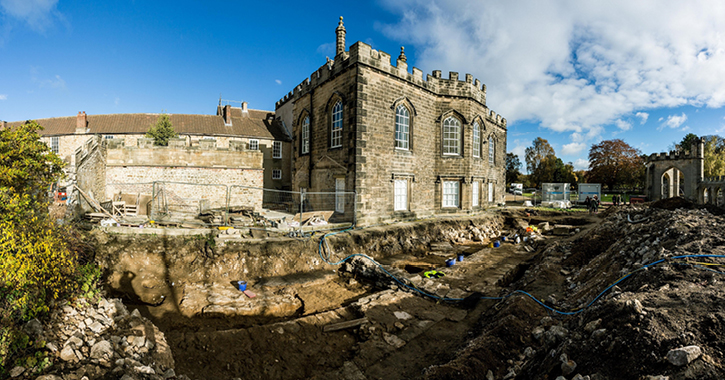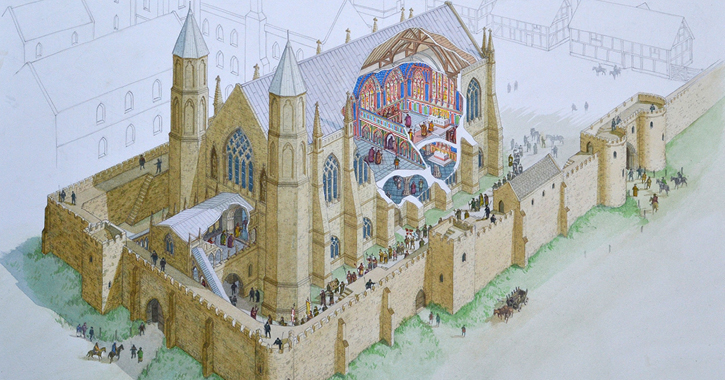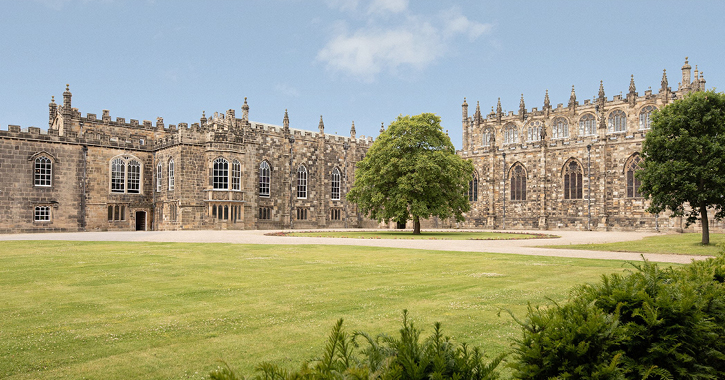The remains of a long-lost medieval chapel, comparable to some of the greatest in Europe, have been uncovered at Auckland Castle in Bishop Auckland.
Historical documents show that a two-storey chapel was built at Auckland Castle in the early 1300s, created for Bishop Antony Bek, (Prince Bishop of Durham 1284-1310), who was a great warrior and one of the most powerful and influential men in Europe at the time.
 Pictured: The site of an archaeological excavation of Bishop Antony Bek’s Chapel at Auckland Castle, Bishop Auckland. © Jamie Sproates, courtesy of The Auckland Project.
Pictured: The site of an archaeological excavation of Bishop Antony Bek’s Chapel at Auckland Castle, Bishop Auckland. © Jamie Sproates, courtesy of The Auckland Project.
Despite it being larger than the king’s own chapel at Westminster, and with pieces of carved stone weighing the same as a small car, the exact location of the 14th century chapel has remained a mystery since its destruction in the 1650s, following the English Civil War.
Now, following years of archaeological excavations by archaeologists from Durham University and The Auckland Project, Bek’s Chapel has finally been discovered and the full extent of its spectacular scale will be revealed to the public in a special exhibition - Inside Story: Conserving Auckland Castle at the Bishop Trevor Gallery, from Monday, 4 March to Sunday, 6 September 2020. The exhibition will also reveal more about the processes and techniques used in the recent conservation of Auckland Castle.
The foundations of Bek’s Chapel were found during digs over a five-month period, which revealed that the walls of the medieval chapel were 1.5m thick, 12m wide and 40m long internally. Archaeologists also found huge bases for internal columns, the buttresses along the chapel’s sides and even part of the floor. And over 300 pieces of elaborately carved stone were excavated, from fragments the size of a fist up to those the weight of a small car.
The uncovered evidence suggests that the original chapel was a vast structure, reaching towards the size of continental chapels such as Sainte-Chapelle in Paris and featuring a timber ceiling and huge pillars with decorated stonework.
Archaeologists believe the chapel’s size, scale and decoration would have been a statement of the status of Bishop Bek, who as Prince Bishop of Durham held remarkable powers to mint coinage, raise armies and even rule on behalf of the king.
 Pictured: A reconstruction image showing the scale and decorated interior of Bishop Bek’s 14th century chapel at Auckland Castle, Bishop Auckland. © Andy Gammon
Pictured: A reconstruction image showing the scale and decorated interior of Bishop Bek’s 14th century chapel at Auckland Castle, Bishop Auckland. © Andy Gammon
Archaeologists from The Auckland Project and Durham University have been working with a panel of archaeological experts to create a reconstruction of Bek’s Chapel, as it would have looked in the 14th century.
The team mapped details from elements of comparable buildings, including kings’ chapels, cathedrals and minsters, to suggest the kind of glasswork, carved stone and roof construction that would have featured in Bishop Bek’s original chapel.
Stuart Harrison, Archaeologist at York Minster, recorded the geometry of the discovered foundations and stonework to reconstruct the framework of the original building. And illustrator, Andy Gammon combined the information with his own research to bring the Chapel to life through a coloured reconstruction.
A new reconstruction image of the medieval building will be on display in the exhibition, alongside finds uncovered during the archaeology dig, including carved stonework.

Make a pilgrimage to Auckland Castle this summer during #Pilgrimage2020 - Durham's Year of Pilgrimage and you may catch a glimpse of the archaeology team, who'll be returning to continue their excavation of Bishop Bek’s Chapel in the hope of uncovering more of the south side of the building.
Related
Comments
Comments are disabled for this post.



 to add an item to your Itinerary basket.
to add an item to your Itinerary basket.
.png)






